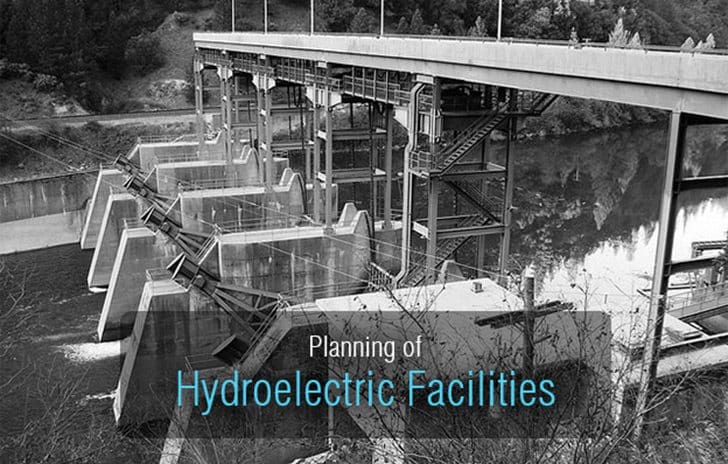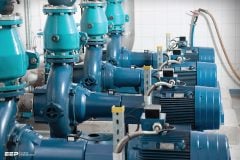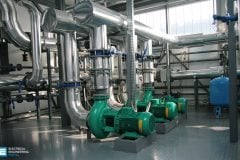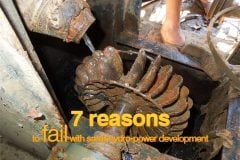
Siting (Location)
Hydroelectric plants are located in geographic areas where they will make economic use of hydraulic energy sources. Hydraulic energy is available wherever there is a flow of liquid and head. Head represents potential energy and is the vertical distance through which the fluid falls in the energy conversion process.
The majority of sites utilize the head developed by fresh water; however, other liquids such as salt water and treated sewage have been utilized.
A significant portion of the project cost may be required for mitigation of environmental effects on fish and wildlife and re-location of infrastructure and population from flood plains.
Hydroelectric Plant Schemes
There are three main types of hydroelectric plant arrangements, classified according to the method of controlling the hydraulic flow at the site:
- Run-of-the-river plants, having small amounts of water storage and thus little control of the flow through the plant.
- Storage plants, having the ability to store water and thus control the flow through the plant on a daily or seasonal basis.
- Pumped storage plants, in which the direction of rotation of the turbines is reversed during off-peak hours, pumping water from a lower reservoir to an upper reservoir, thus “storing energy” for later production of electricity during peak hours.
Selection of Plant Capacity, Energy, and Other Design Features
The generating capacity of a hydroelectric plant is a function of the head and flow rate of water discharged through the hydraulic turbines, as shown in equation below:
P = 9.8 η Q H
where:
P = power (kilowatts)
η= plant efficiency
Q = discharge flow rate (meter3/s)
H = head (meter)
Historical daily, seasonal, maximum (flood), and minimum (drought) flow con-ditions are carefully studied in the planning stages of a new development.
Plant capacity, energy, and physical features such as the dam and spillway structures are optimized through complex economic studies that consider the hydrological data, planned reservoir operation, performance characteristics of plant equipment, construction costs, the value of capacity and energy, and discount rates.
The costs of substation, transmission, telecommunications, and remote control facilities are also important considerations in the economic analysis. If the plant has storage capability, then societal benefits from flood control may be included in the economic analysis.
Another important planning consideration is the selection of the number and size of generating units installed to achieve the desired plant capacity and energy, taking into account installed unit costs, unit availability, and efficiencies at various unit power outputs (American Society of Mechanical Engineers Hydro Power Technical Committee, 1996).
Hydroelectric Power Plant Turbine Generator Group (VIDEO)
Resource: Power Engineering Handbook by L. L. Grigsby (Buy this book at Amazon)










oh yes i really love this portal its now my favorite ….i simply love it